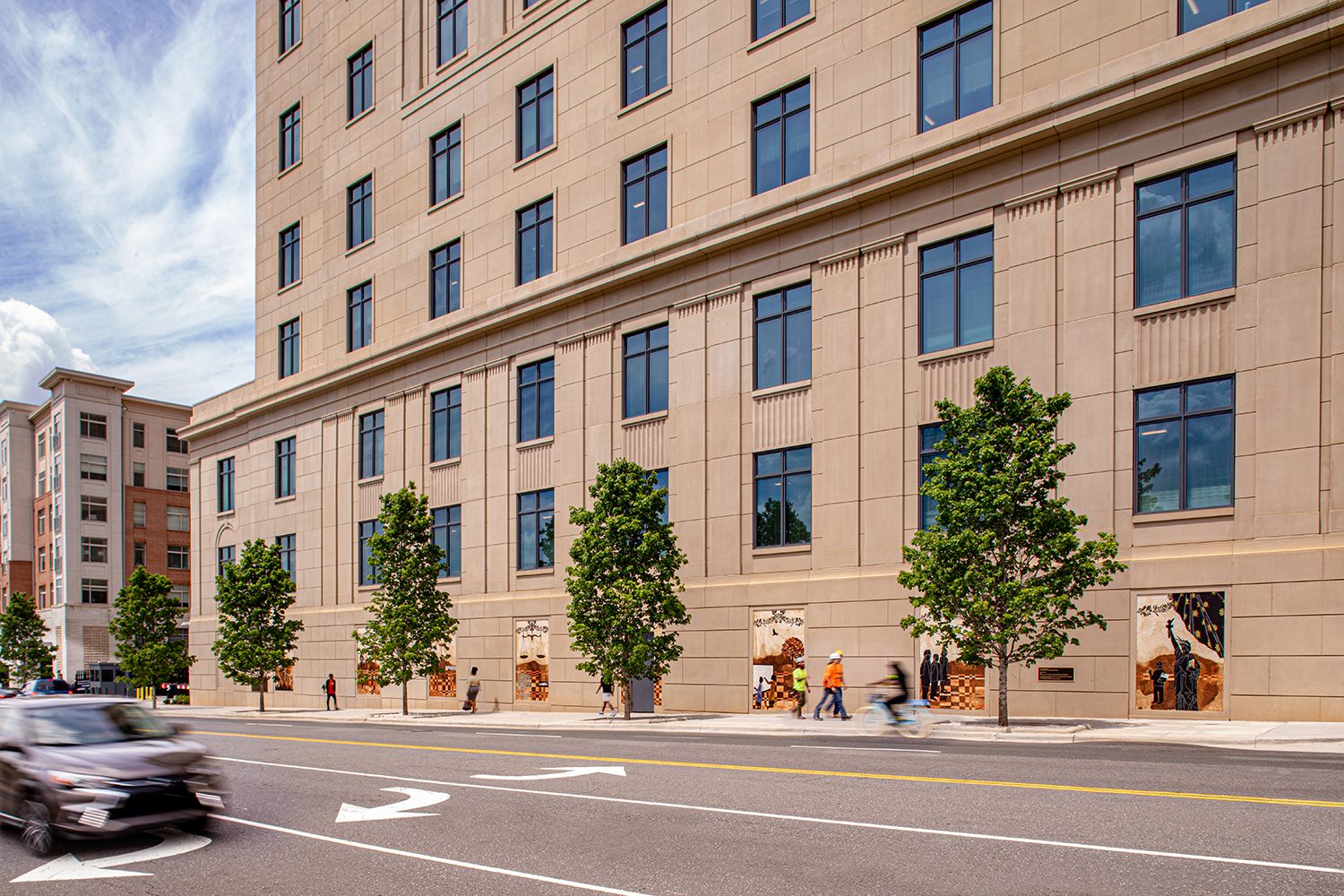
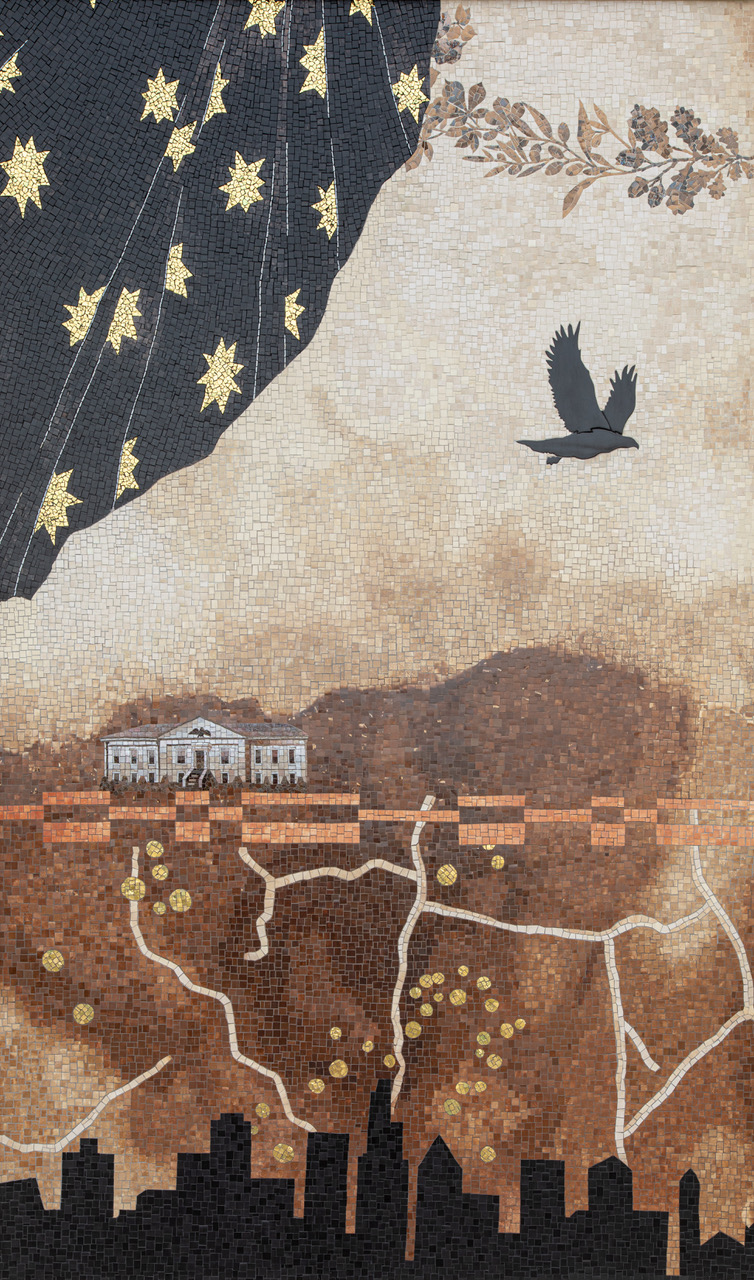
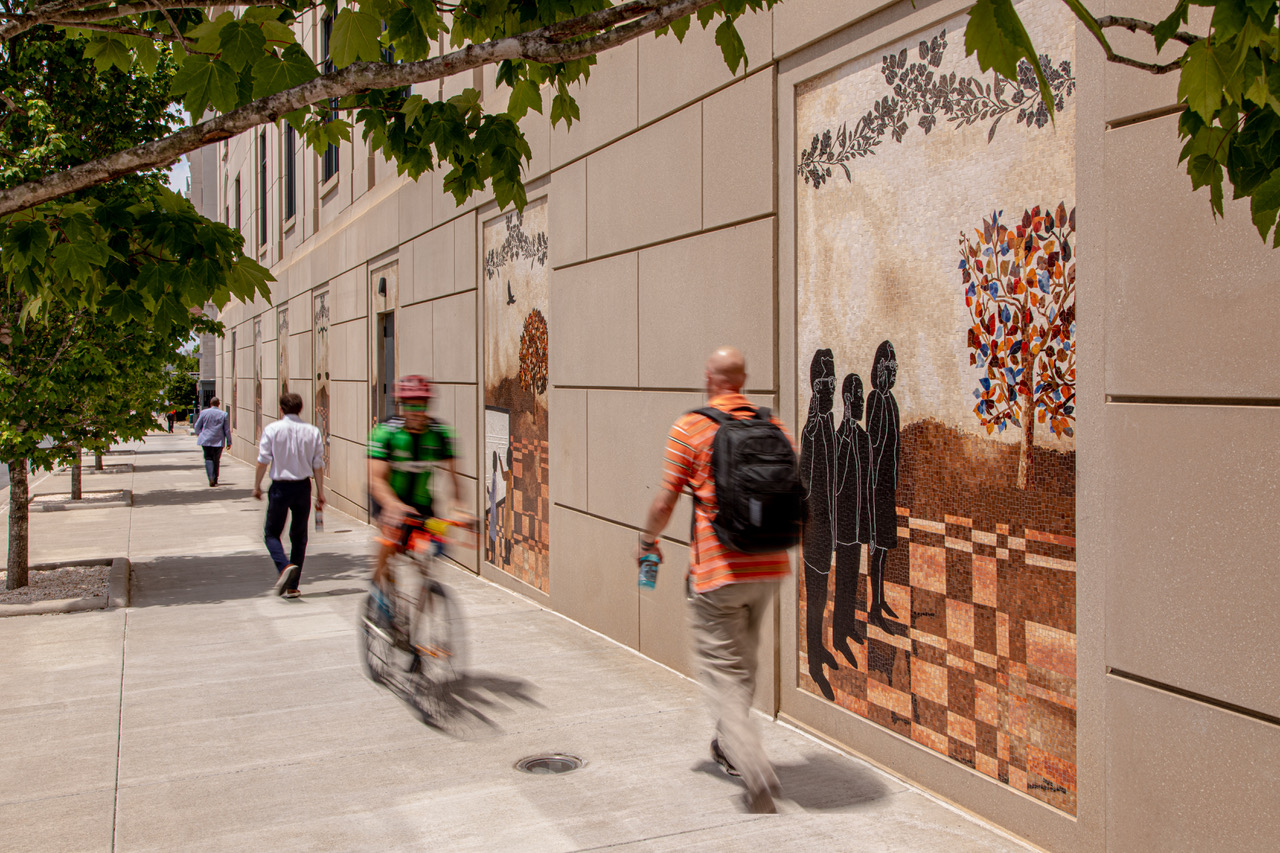

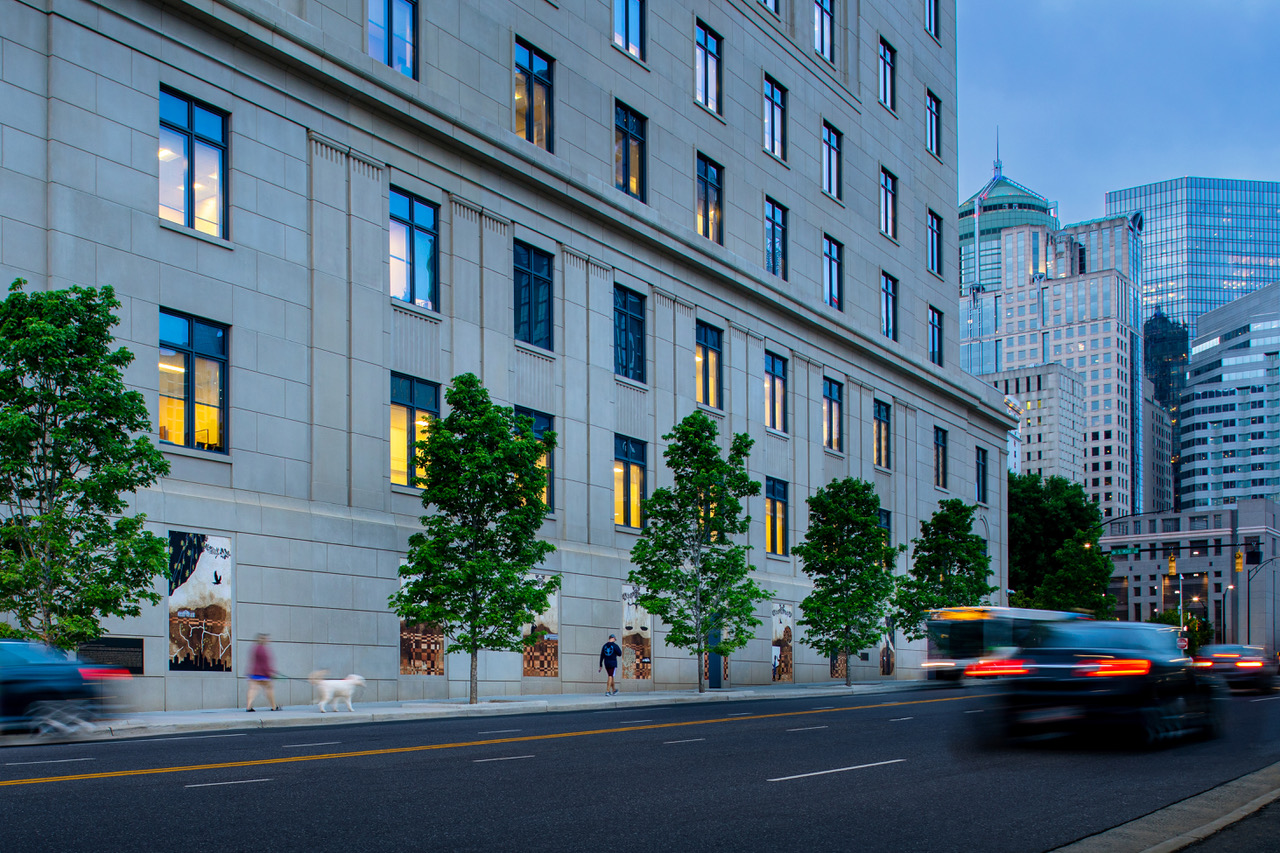
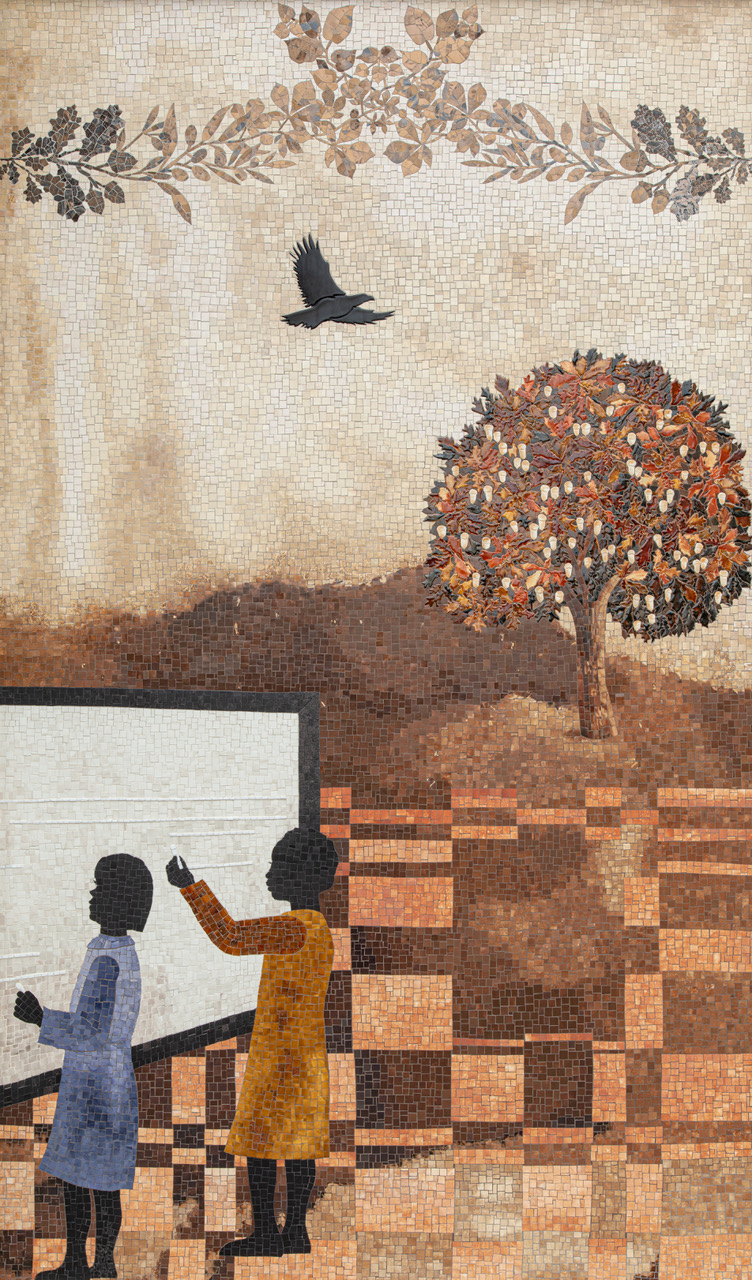
Client: General Services Administration Art in Architecture Program
Location: Charlotte, NC, United States
Completion date: 2022
Artwork budget: $632,000
Project Team
artist
Ellen Driscoll
fabrication
Saskia Siebrand
Mosaika
project coordination
Nicole Avila
GSA
project coordination
Susan Conger
GSA
site/architecture oversight
Grant Marani
Robert A. M. Stern
Overview
Site Woven mosaics on the façade of the Charles R. Jonas Federal Building and Courthouse interweave the rich histories of the architecture and functions that occurred in the buildings over time. The first panel features the original U.S. Mint building that occupied the site from 1837 to 1931, a map of the North Carolina gold rush, and Charlotte’s present-day skyline. The second and third panels highlight the building’s past uses as a U.S. Post Office and a U.S. Military Processing Station. The fourth and fifth panels honor the site’s current function as a federal courthouse and the landmark desegregation decision in Swann v. Charlotte-Mecklenburg Board of Education. The final two panels show people taking the Oath of Allegiance to become United States citizens during the naturalization ceremonies that take place in the courthouse throughout the year. The artwork’s composition is framed by curtains adorned with stars that were in the earliest American flags. A garland of leaves—oak, chestnut, linden, and olive – that symbolize justice, connects all the panels. The scenes are anchored and connected by a background landscape that evokes the Carolina Piedmont. Interlaced through the landscape is a simple weaving pattern that celebrates North Carolina’s history of textile production.
Goals
The goal of Site Woven was to encourage the public and those working in the courthouse to reflect upon the rich 186-year history of the site. Visual strategies to create coherence out of multiple stories include a single horizon line unifying all the panels across the span of the exterior annex, garlands of leaves from four trees symbolic of justice creating a line across the top, and curtains drawing aside on the left and right panels. The landscape of the gentle Piedmont hills that are visible from the building, are in the distance in each mosaic panel. The entire design is unified by the woven landscape across all the panels. The woven landscape, unfinished in places, in the process of being woven, or unwoven, symbolizes the active ongoing nature of both the site, and the work that takes place within the courthouse every day. Historical figures are in silhouette, whereas the contemporary figures taking the Oath of Allegiance are rendered contemporary with faces drawn in. The intricate texture of mosaic which can only be done by human hands, is infallibly engaging in public space, slowing a hurried step, and inspiring reflection.
Process
The Site Woven collaboration was between 12 federal judges, the fabricator Mosaika, and me. Judge Frank D. Whitney lead the process with his deep knowledge that included writing a book on the history of the site. Grant Maroni and his team from Robert A. M. Stern helped to identify possible locations for art within the Charles R. Jonas Federal Courthouse undergoing renovation, and within the new Annex they were designing. GSA's Nicole Avila and Susan Conger coordinated all the stages of design development among stakeholders. Three designs and three different locations later, the exterior of the new Annex was decided as the best site, visible to the general public as well as for all those working there. The judges identified specific points of past and present history that they wanted the artwork to address. I then worked closely with Saskia Siebrand at Mosaika who used her vision and creativity to translate my walnut ink drawings into porcelain glazes, with the garlands of each panel in Byzantine glass smalti to catch the changing light throughout the day. My overarching task was to respect the judges' goals for the artwork, while still creating a work of beauty that would be synchronous with my own visual history and vocabulary.
Additional Information
The work is outdoors in an increasingly busy part of Charlotte across from popular sports fields. The combination of porcelain and byzantine glass smalti is highly responsive to changing light, with reflection off of the garlands of glass smalti keeping the work continually visually alive.